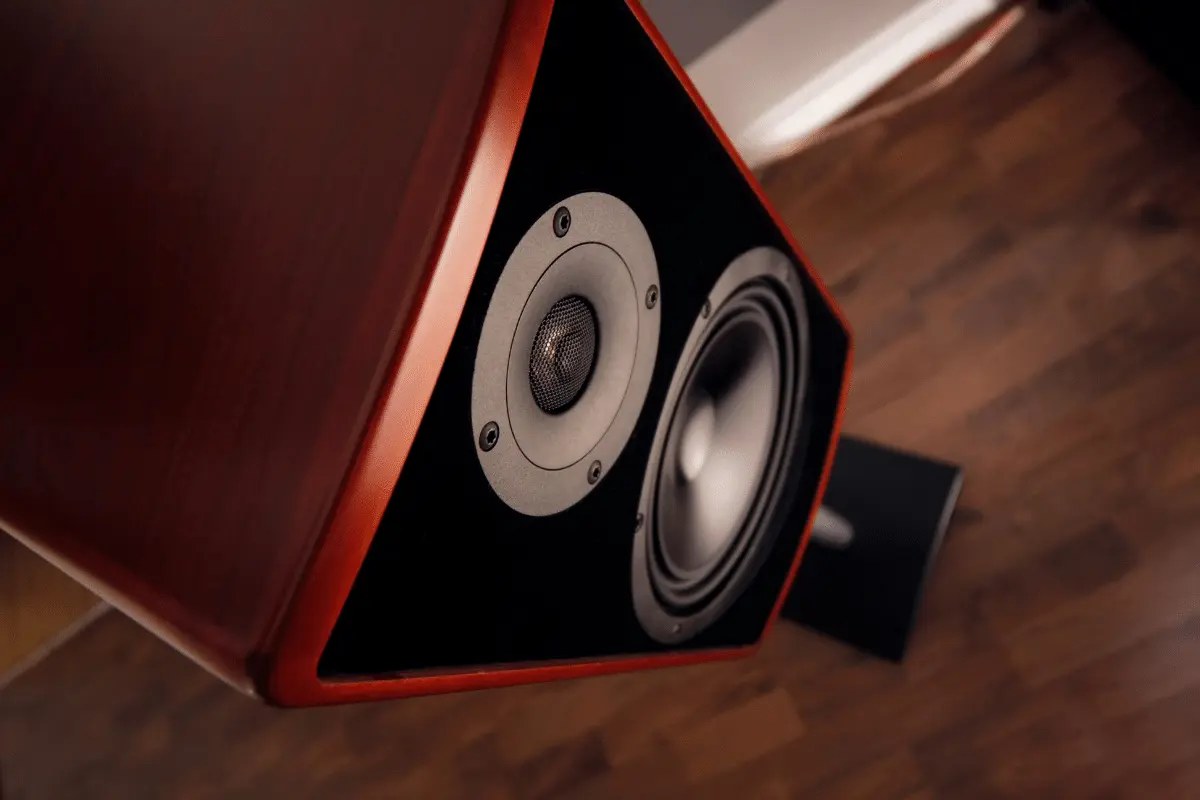Although a headphone amplifier and an audio interface are essentially separate audio gear pieces, they have some functional similarities. You might be wondering if both devices are necessary for your home studio.
Is it necessary to purchase a specialized headphone amplifier if you already own an audio interface? For every question, there is an answer. You only do not get it if you don’t pour out your worry.
On the one hand, getting a headphone amplifier will not be necessary if you have an audio interface because most devices include at least one headphone connector and volume control; thus, an interface is not necessary. While on the other, getting a headphone amp is a smart choice if your interface has low ohms and does not deliver enough gain.
Now, that was in brief. If you want complete knowledge of when and when not to use headphones amp with your audio interface and vice versa, you are in the right place. Read on to learn more.
What Is an Audio Interface and How Does It Work?
You’ll almost always need an audio interface for all of your recording and music production needs. At its most basic level, the interface receives information from your input devices and changes it into something that an output device can use.
You’d first plug the keyboard into your interface if you’re recording from a digital instrument. The audio interface would take the digital data and play it back through whatever output. Sound waves, such as those singing or playing an instrument, are fed into a microphone through interfaces.
They transform the real sound waves into a digital sound file that you can mix and control using an analog to digital converter. Audio interfaces serve a variety of purposes. They act as translators, converting sound waves into digital files and vice versa.
Sound enters the system, and the interface converts it into a format that the computer can understand. You may modify the sound and add various effects this way. After that, the interface translates the digital audio and outputs it in a human-readable format.
What Is a Headphone Amp and How Does It Work?
Unlike audio interfaces, headphone amplifiers have only one purpose: to enhance an audio signal so that one may hear it clearly through headphones.
A variety of devices have built-in headphone amplifiers. Any device with a headphone jack has a built-in headphone amplifier. It wouldn’t work otherwise. As a result, you will find headphone amplifiers as one of the components in cell phones, iPods, CD players, and laptops.
A separate headphone amplifier is also available. Dedicated devices are usually of greater quality than built-in devices, but they might be costly. It’s a good idea to consider when you’ll need one before making a purchase. We are set to dive into the next discussion with the above knowledge in mind.
When Should You Use a Headphone Amplifier?
Because audio interfaces already have a built-in headphone amp, you’ll need a separate one to improve your output quality. This is usually done so that the person recording may hear a playback track in real-time.
A separate headphone amp is required for professional recording to enable the finest quality recording from all of your sources.
If you have audiophile-quality headphones, you may wish to use a headphone amp outside of a recording environment to get the best audio your headphones can produce.
Why Isn’t a Headphone Amp Necessary for an Audio Interface?
Every device with a headphone jack, on the other hand, comes with a built-in headphone amplifier, and audio interfaces come with at least one headphone jack. This eliminates the need for a separate or dedicated headphone amplifier in interfaces.
The DAC and headphone amp are usually housed in the same chip in computers and mobile phones. However, the headphone amp is housed in a separate opamp chip in most audio interfaces.
The cost and capacity of these opamp chips vary. It’s also worth noting that today’s audio interfaces have a good headphone output and can drive loud music adequately.
Furthermore, most headphones or earphones are extremely efficient and may be used with audio equipment without an amplifier.
A headphone amp isn’t required when using noise-canceling headphones with a built-in headphone amp. It precludes any major audio benefit from using an external headphone amp.
When Is a Headphone Amplifier Necessary?
If your interface’s headphone output does not generate enough sound pressure levels, you’ll need to use a specialized headphone amplifier.
Another reason you might want to use a separate amplifier is to improve the quality of your audio. Getting an extra headphone amp can help if your interface produces a noisy headphone output or distortion noise when you ramp up the volume.
However, in this case, you should verify the source of the distortion or noise to make sure your audio interface doesn’t cause it. If a headphone amp doesn’t cure the problem and the sound quality is still poor, you may need to upgrade your audio interface.
A dedicated headphone amp, especially high-quality ones, can help if you use high-impedance headphones. You can, of course, switch headphones.
What are the advantages of using a headphones amp with an audio interface?
Assume you’re an audiophile or a musician needing a well-equipped home studio or a high-quality listening system. In that situation, a headphone amplifier will undoubtedly be beneficial. This is especially true if money isn’t an issue and you can afford to invest in higher-end audio gear.
After all, if you’re just getting started and only have enough money for a bare-bones setup, a headphone amp isn’t a priority. Instead, it’s one of those add-on devices for your computer. For starters, adding a headphone amp can dramatically boost the clarity, dynamics, and detail of the sound you’re listening to.
Furthermore, connecting your audio interface to a high-powered external headphone amp will undoubtedly drive power-hungry headphones. If your headphones can out-resolve the signal provided by the built-in headphone amp in your audio interface, upgrading to a high-end external headphone amp can help.
Using a headphone amp also allows you to send amplified, high-quality audio signals from your audio interface to many headphone listeners in your home studio. It improves the audio output of either high-impedance or low-impedance headphones.
Conclusion.
Headphone amplifiers and audio interfaces are like independent persons but friendly. You can use your audio interface well without the help of headphone amplifiers.
However, there are times when the headphones amp doesn’t give you what you need. Therefore, the headphone amp comes in to smoothen your sound quality.





Leave a Reply
You must be logged in to post a comment.